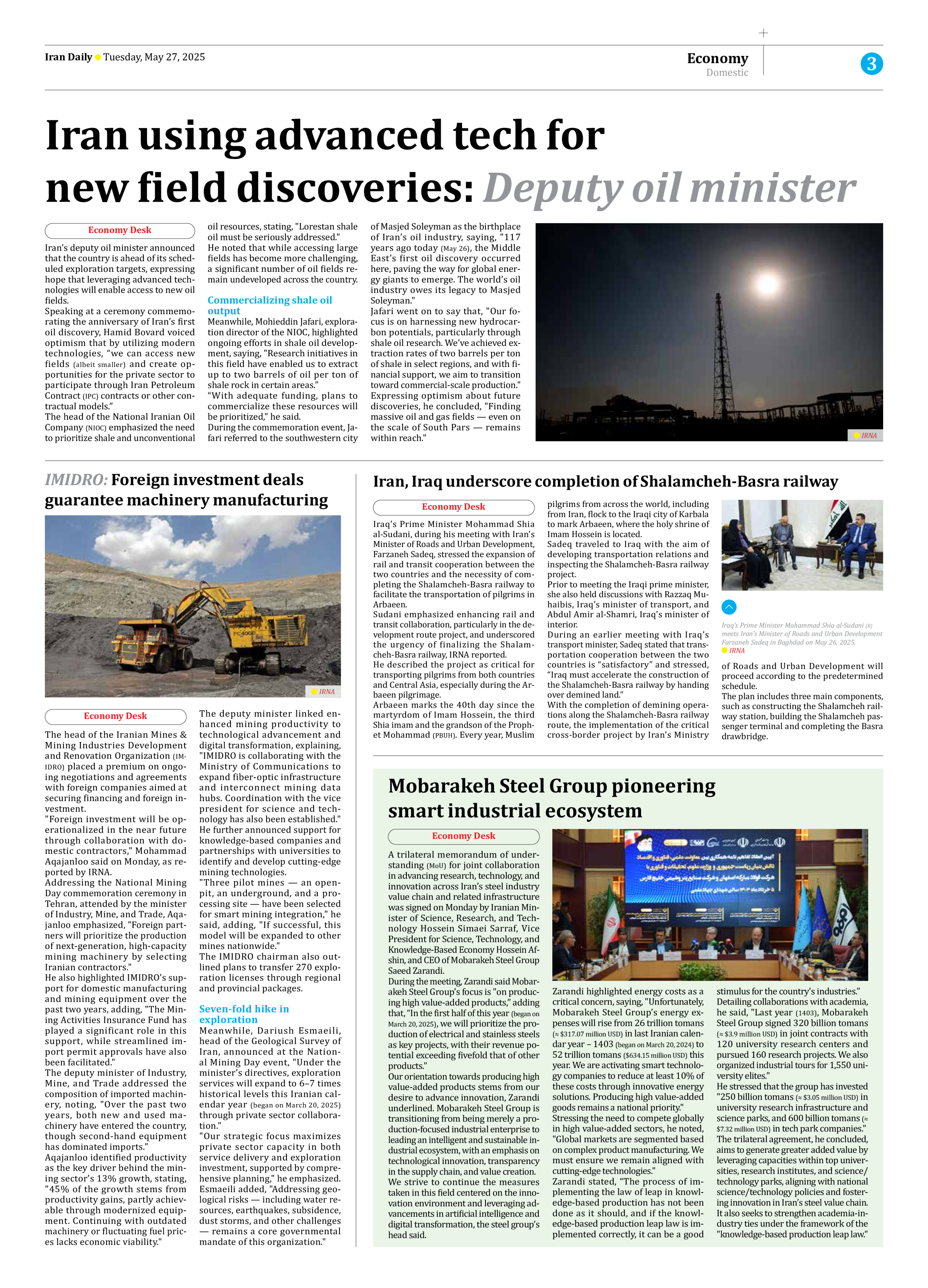
Mobarakeh Steel Group pioneering smart industrial ecosystem
A trilateral memorandum of understanding (MoU) for joint collaboration in advancing research, technology, and innovation across Iran’s steel industry value chain and related infrastructure was signed on Monday by Iranian Minister of Science, Research, and Technology Hossein Simaei Sarraf, Vice President for Science, Technology, and Knowledge-Based Economy Hossein Afshin, and CEO of Mobarakeh Steel Group Saeed Zarandi.
During the meeting, Zarandi said Mobarakeh Steel Group’s focus is "on producing high value-added products,” adding that, “In the first half of this year (began on March 20, 2025), we will prioritize the production of electrical and stainless steels as key projects, with their revenue potential exceeding fivefold that of other products."
Our orientation towards producing high value-added products stems from our desire to advance innovation, Zarandi underlined. Mobarakeh Steel Group is transitioning from being merely a production-focused industrial enterprise to leading an intelligent and sustainable industrial ecosystem, with an emphasis on technological innovation, transparency in the supply chain, and value creation.
We strive to continue the measures taken in this field centered on the innovation environment and leveraging advancements in artificial intelligence and digital transformation, the steel group’s head said.
Zarandi highlighted energy costs as a critical concern, saying, "Unfortunately, Mobarakeh Steel Group’s energy expenses will rise from 26 trillion tomans (≈ $317.07 million USD) in last Iranian calendar year – 1403 (began on March 20, 2024) to 52 trillion tomans ($634.15 million USD) this year. We are activating smart technology companies to reduce at least 10% of these costs through innovative energy solutions. Producing high value-added goods remains a national priority."
Stressing the need to compete globally in high value-added sectors, he noted, "Global markets are segmented based on complex product manufacturing. We must ensure we remain aligned with cutting-edge technologies."
Zarandi stated, “The process of implementing the law of leap in knowledge-based production has not been done as it should, and if the knowledge-based production leap law is implemented correctly, it can be a good stimulus for the country's industries.”
Detailing collaborations with academia, he said, "Last year (1403), Mobarakeh Steel Group signed 320 billion tomans (≈ $3.9 million USD) in joint contracts with 120 university research centers and pursued 160 research projects. We also organized industrial tours for 1,550 university elites."
He stressed that the group has invested "250 billion tomans (≈ $3.05 million USD) in university research infrastructure and science parks, and 600 billion tomans (≈ $7.32 million USD) in tech park companies."
The trilateral agreement, he concluded, aims to generate greater added value by leveraging capacities within top universities, research institutes, and science/technology parks, aligning with national science/technology policies and fostering innovation in Iran’s steel value chain.
It also seeks to strengthen academia-industry ties under the framework of the "knowledge-based production leap law."







